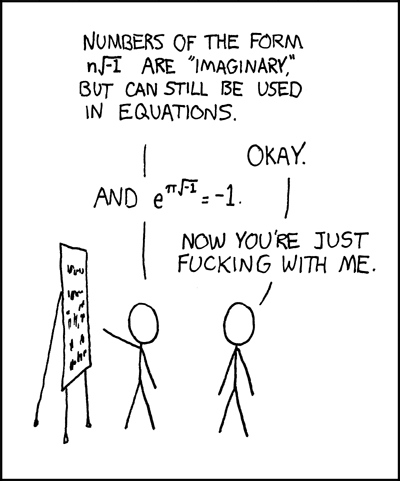Today is March 14th, which is often written in the west as 3/14. Looking at it this way, the date bears a striking resemblance to a common approximation for pi, the mathematical constant which expresses the ratio of any Euclidean circle’s circumference to its diameter. For this reason, today is celebrated by math enthusiasts the world over as Pi Day, a day on which the wonders of pi (and usually also pie) can be shared by one and all. There is even a website dedicated to pi day (and of course associated merchandising: check out this awesome clock). On the occasion of this delightful holiday, I would like to remind the reader about several interesting things about pi.
The significance of the ratio goes back to ancient times, when it was probably necessary for constructing simple structures. Different cultures used different approximations for its value: in a misguided attempt to discredit the bible (as if that required skill or persistence), much has been said to amusing effect about how the Hebrews apparently believed pi to be exactly 3. Liu Hui invented a clever algorithm to approximate pi in third century China. He inscribed a hexagon inside a circle and hence found a lower bound for pi by taking the ratio of the polygon’s perimeter to its diagonal (which is also the circle’s diameter). It was then fairly easy to drop a radius, bisecting a side of the hexagon, and use the Pythagorean theorem to calculate the added length to the perimeter of the resulting dodecagon:
Liu used this method to approximate pi as 3.14 using an inscribed 96-gon, and eventually discovered a shortcut approximation regarding the difference in area between N-gons and 2N-gons that obviated the need to take messy square roots. Using the shortcut, he was able to approximate pi to 3.1416 with the 96-gon result as though he had carried the algorithm out to a 1536-gon. The unspoken assumption here is that the perimeters of the polygons converge on the circumference of the circle as the number of sides approaches infinity, a fact which is obvious when one considers the more modern set-theoretic definition of a circle as the set of all points equidistant from a given point.
But why approximate pi at all? Can’t we just find its exact value? Multiple, quite exotic proofs relying on calculus, sequences, polynomial expansions, and trigonometric functions have established that pi does not have an exact value. Pi is irrational, meaning it cannot be expressed as a fraction of the form a/b where a and b are integers. This means its decimal representation goes on literally forever. But also, pi is transcendental, which means it cannot even be expressed algebraically and its decimal representation is guaranteed never to repeat (e.g. 0.123123123…). This is different from, say, the square root of two, which is irrational but can be expressed very simply as a polynomial: 2^(1/2). One can state the definition of pi, and one can use various ingenious techniques to estimate its value to great precision, but it is impossible to ever “know” what that value actually is.
One of the most remarkable formulas in all of mathematics involves pi, as well as e (Euler’s constant, the base of the natural logarithm) and the square root of -1. It is essentially due to the close relationship that pi has with circles, and hence trigonometric functions, that Euler was able to prove in 1748 the following amazing fact:
Happy Pi Day!
